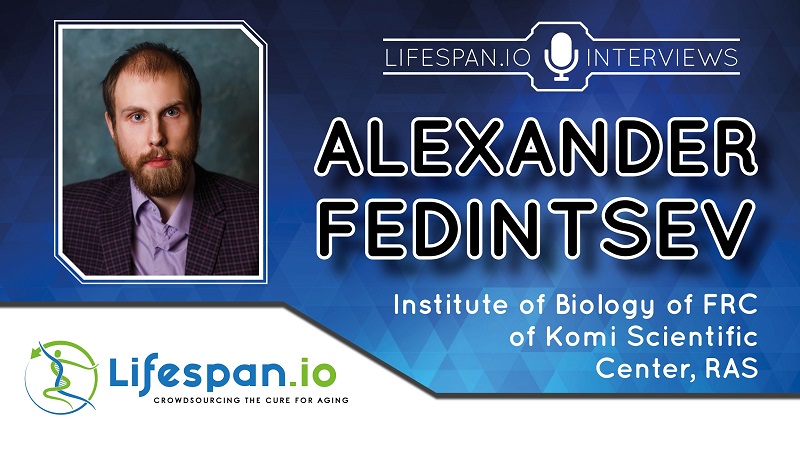.
S O U R C E : Life Extension Advocacy Foundation (LEAF)
O P E N A C C E S S S T U D Y U P O N W H I C H T H I S R E V I E W I S B A S E D : Research Gate (Stochastic non-enzymatic modification of long-lived macromolecules-a missing hallmark of aging)

Two researchers, Alexander Fedintsev and Alexey Moskalev, have published an expansive review paper in which they propose a new hallmark of aging [1].
The authors draw our attention to a phenomenon that is sometimes overlooked in the context of aging: the accumulation of damage to long-lived molecules caused by the non-enzymatic chemical reactions of glycation, carbonylation, and carbamylation. With time, these modifications inflict extensive damage to our bodies. The authors go as far as to cautiously suggest that this phenomenon might be the upstream cause of several known hallmarks of aging, such as cellular senescence.
Although the authors dedicate a fair share of their attention to intracellular damage, such as histones being susceptible to glycation, their focus is on the stiffening of the extracellular matrix (ECM), which stems from the accumulation of cross-links between long-lived molecules, mainly collagen and elastin. As these molecules have a lifespan comparable to that of a human, the damage is effectively irreparable due to the slow turnover. Some researchers suggest that the decrease in tissue elasticity puts a 100- to 120-year upper limit on the functioning of our cardiovascular and pulmonary systems, which would be in line with our observations [2].
Age-related ECM stiffening seems to inhibit the proliferation of stem cells and even cause cellular senescence. Amazingly, old, senescent cells can be rejuvenated by transferring them into young ECM. The authors make an interesting connection between the mechanistic qualities of the ECM and intra- and intercellular chemical reactions. One of their boldest claims is that the physical stiffness of the ECM is mistaken by cells for fibrosis. This cellular misunderstanding triggers a fibrosis-fighting mechanism that involves cellular senescence. Fighting senescence is one of the major goals of longevity research, and considerable progress has been made, but the authors suggest that we might have been looking for answers in the wrong places. In another example, mesenchymal stem cells (MSCs) tend to differentiate into bone cells when cultured on a stiff matrix. This, the authors claim, may explain the phenomenon of tissue calcification.
ECM stiffness, of course, can wreak havoc in more than one way. For instance, when ECM stiffness increases due to glycation, it significantly reduces T cell proliferation. Adding to the troubles of the immune system, migrating cells, such as immune cells, can experience nuclear membrane rupture when squeezing through tight spaces, which results in cellular death or DNA breakage. Cross-links facilitate this phenomenon by reducing ECM permeability.
A putative mechanism of cellular senescence.
Arterial stiffness resulting from ECM aging, the authors suggest, may by itself explain hypertension, because baroreceptors (the receptors in our blood vessels that react to blood pressure), contrary to what their name suggests, react to strain rather than to pressure. As vascular walls get stiffer, they strain less under the same pressure, tricking the receptors into miscalculating desirable blood pressure.
ECM affects intracellular processes via integrins, proteins that attach the cellular cytoskeleton to the ECM. Integrins’ reaction to increased ECM stiffness leads to a surge in ROS (reactive oxidative species) production.
ECM stiffness may play a role in tumor formation by promoting angiogenesis. Developing their mechanistic argument, the authors suggest that “a physical cue devoid of chemical specificity” – i.e. ECM stiffening – may be enough to change certain cell phenotypes into cancerous ones.
As the authors explain, it may also contribute to age-related cognitive decline in at least two ways. First, arterial stiffening may lead to BBB (brain-blood barrier) disruption. Second, ECM stiffening in the brain may impede the formation of new synapses, which simply lack room to thrive, and thus reduce neuroplasticity.
Accumulation of AGEs (advanced glycation products) leads to lung tissue stiffening, causing breathing difficulties in old age. Last but not least, AGEs can be devastating to our cartilage and bone tissue.
Although the authors admit that reversing ECM stiffness is going to be an uphill battle, they do suggest a battery of possible interventions. AGE inhibitors have been shown to extend the lifespan of some species. Caloric restriction, one of our best weapons in our fight against aging, is known to reduce the rate of AGE accumulation. Unfortunately, AGE inhibitors can slow the rate of ECM degradation but cannot rejuvenate the matrix. Other promising avenues are boosting the production of elastin and restricting protein consumption.
Since a paper that declares the discovery of a new hallmark of aging is by all means a major event, we decided to interview one of the authors, Alexander Fedintsev.
What made you focus on this particular problem? How did you realize that this might be a new hallmark of aging? Why do you think this has been overlooked?
Many other researchers, not just me, have been aware of protein cross-links for years. The idea that non-enzymatic cross-links are the primary cause of aging was proposed by Johan Björksten in 1942 but, ever since, their role went largely underestimated. Aubrey De Grey did a great job describing glycation in his book, yet many researchers still think that cross-links are responsible only for arterial stiffening (a factor that contributes to hypertension) and wrinkle formation. The damage of cross-linking to long-lived macromolecules is not even mentioned in the most famous and cited paper in biogerontology, The Hallmarks of Aging [3]. This is what initially caught my attention, along with the fact that while many scientists work on clearing senescent cells, restoring mitochondrial function, epigenetic rejuvenation, et cetera, only a handful center on ECM damage. I am worried by this, especially since developing a cross-link breaker is an extremely hard problem, one that might require major efforts to crack.
Your paper says that non-enzymatic modifications of long-lived macromolecules give rise to virtually all hallmarks of aging. It sounds almost like you have discovered the ultimate upstream cause of aging.
As I said, this was first proposed more than half a century ago by Björksten. However, at that time, there was little to no evidence to back it up. Today, we have a much better understanding of the molecular mechanisms behind the pathogenicity of cross-links and adducts. Two different views of the subject exist. Let’s call the first one the weak ECM hypothesis. It states that the damage to long-lived macromolecules is just one of the drivers of aging, though a particularly important one. The strong ECM hypothesis postulates that we cannot solve the problem of aging solely by attempts on cellular rejuvenation since cellular aging is caused mainly by ECM degeneration. Inversely, research shows that cells are rejuvenated when transferred into young ECM. So, yes, ECM rejuvenation might be the key.
In our paper, we stick mostly to the weak ECM hypothesis and demonstrate that ECM degradation is an important contributor to the aging of all organs and systems, important enough to be considered a new hallmark of aging. Moreover, it seems that damage to the ECM (and other long-lived molecules) might even cause some of the other hallmarks, such as senescent cell accumulation.
Several years ago, I stumbled upon a paper [4] that claimed that in yeast, all intracellular damage is cleared during gametogenesis, effectively resetting biological age. Nothing surprising about that, but, stunningly, according to the paper, this age resetting does not necessarily require meiosis! Naturally, we should not conclude that cells can completely self-repair from a single study that can be faulty or inapplicable to mammalian cells. But if this is applicable to humans, then our somatic cells might have the potential to completely rejuvenate themselves. I asked myself: “Let’s say it’s true. What might be the cause of aging then?” And the answer was the extracellular matrix. It goes like this: ECM proteins like collagen and elastin have enormously long lifespans during which they accumulate uncontrolled non-enzymatic modifications via glycation, carbonylation, and carbamylation. This leads to the formation of toxic adducts. These, in turn, cause sterile systemic inflammation and cross-links that stiffen the matrix. The resistance to the ECM-degrading proteases (like collagenase) increases, the protein turnover slows, and damage accumulation accelerates. Contrary to intracellular damage, there are no known enzymes (at least, not in mammals) that can neutralize adducts and break cross-links, so, currently, we are helpless.
Still, the evidence in favor of the strong ECM hypothesis has been mounting. Neurons transplanted from mice into rat brains can live up to 40% longer than a mouse. Mouse erythropoietic stem cells being serially transplanted to younger mice could live almost 3 times longer than the species’ maximal lifespan. This suggests that cells might have a much greater potential for self-rejuvenation than previously thought, and what might be limiting this ability to regenerate is their microenvironment and ECM in particular.
Stem cells from old mice were shown to be rejuvenated by young ECM [5], while old ECM negatively influences stem cells from young mice. Stiff ECM negatively impacts neuronal progenitors [6]. In addition, ECM is causatively linked to cellular senescence.
Speaking of which, you seem to suggest a new explanation for cellular senescence: that this is basically a mechanism for fibrosis prevention. Can you explain this to our readers?
The fibrosis-mediating role of cellular senescence was discovered long ago. It makes perfect sense in the context of the cell cycle arrest and SASP (senescence-associated secretory phenotype). It’s essentially a part of our wound-healing process. The cell cycle arrest is needed to reduce the amount of collagen that the cells synthesize. Matrix metalloproteinases included in SASP destroy excessive collagen, while proinflammatory cytokines attract immune cells to finalize the cleanup. The anti-fibrotic nature of cellular senescence has been demonstrated in multiple studies. So, the question is, if cellular senescence is indeed an antifibrotic program, why is it dramatically upregulated during the aging process? My bet is that cells can sense the excess of collagen via ECM stiffening, and if the stiffness exceeds a certain threshold, this might launch the cellular senescence sequence. But the increase in stiffness is exactly what happens during normal aging due to non-enzymatic cross-link formation! So, in terms of stiffness, glycated, aging ECM may be indistinguishable from fibrotic ECM. This erroneously triggers the wound-healing senescence program in the absence of any actual wound or fibrosis. There is a brilliant study that demonstrates the role of the ECM in cellular senescence: the scientists created mice with a mutation that makes the collagen produced by their cells resistant to collagenase (which is very similar to what happens during normal aging). This caused severe premature senescence along with decreased lifespan, kyphosis, osteoporosis, and hypertension [7]. Amazingly, interaction with ECM from young cells is sufficient to restore aged, senescent cells to an apparently youthful state [8].
















































